These magical imaginary worlds – the creative work of Manuel Rodriguez Sanchez (Manuel Rodríguez Sánchez). Manuel is studying graphic design and is engaged in photography, skillfully using photo manipulation.
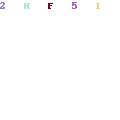
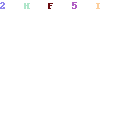
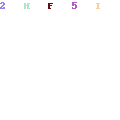
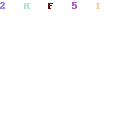
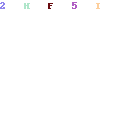
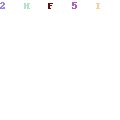
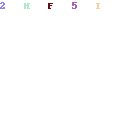
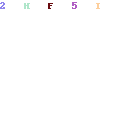
Amateurs look for inspiration; the rest of us just get up and go to work. Chuck Close
These magical imaginary worlds – the creative work of Manuel Rodriguez Sanchez (Manuel Rodríguez Sánchez). Manuel is studying graphic design and is engaged in photography, skillfully using photo manipulation.








To pass the time during long flights, artist Nina Katchadourian goes to the lavatory, adorns herself in tissue paper costume, and creates hilarious self-portrait photos in the style of Flemish Renaissance paintings. She calls the series “Seat Assignment: Lavatory Self-Portraits in the Flemish Style.”
While in the lavatory on a domestic flight in March 2010, I spontaneously put a tissue paper toilet cover seat cover over my head and took a picture in the mirror. The image evoked 15th-century Flemish portraiture. I decided to add more images made in this mode and planned to take advantage of a long-haul flight from San Francisco to Auckland, guessing that there were likely to be long periods of time when no one was using the lavatory on the 14-hour flight. I made several forays to the bathroom from my aisle seat, and by the time we landed I had a large group of new photographs entitled Lavatory Self-Portraits in the Flemish Style.
http://www.ninakatchadourian.com/
http://laughingsquid.com/airplane-lavatory-self-portraits-in-the-flemish-style/
By Susan Hallett
OTTAWA—“Art In Daily Life: Essential Or Irrelevant? Who decides? Who pays? Who cares?”
Those were the questions up for discussion at the third annual Walrus Foundation debate held at the National Gallery of Canada on May 2.
The query was also posted on the new “Soapbox” site (www.walrussoapbox.ca) created by The Walrus Magazine to provoke debate about the relevance of art in daily life.
The thought-provoking event, moderated by CBC Radio’s Carol Off, saw Stephen Borys, executive director of the Winnipeg Art Gallery and Kate Taylor, feature writer for the Globe and Mail’s arts section, arguing for “essential” against National Gallery director Marc Mayer and Toronto writer Sarah Milroy, who argued for “irrelevant.”
Several “provocateurs,” including Peter Simpson of The Ottawa Citizen and artist Andrew Morrow, were present to lead a lively Q&A period after the debate.
Morrow asked whether it would be considered frivolous to have the government send him to Berlin during the economic downturn to take advantage of the seething arts culture in that happening city.
One debater considered art to be something for the elite, or too Euro-centric, while another stated that art is part of a healthy lifestyle and contributes to well-being.
No need for debate in Finland
No one brought up the fact that the Finnish city of Helsinki is the World Design Capital (WDC) in 2012 along with Espoo, Vantaa, Kauniainen, and Lahti.
Approximately 100 exhibitions covering a wide range of designs will be presented throughout the year and the boundaries between art and design will be examined. All exhibitions of both the Design Museum and the Museum of Finnish Architecture are included in the program.
Design is also taking over all major museums, including Kunsthalle Helsinki, Amos Anderson Art Museum, the City Museums, Kiasma Museum of Contemporary Art, and the Museum of Technology.
In fact, “365 Wellbeing” is a project led by Aalto University (named after the world-famous Finnish designer Alvar Aalto) in which designers will look for new patient-centred solutions for municipal well-being services. The official website states that the project “encourages the exploration and adoption of healthier lifestyles and designs functional, pleasant, and healthy environments.”
My experience of Finland is that art is present in nearly all aspects of daily life. I was particularly struck by the fact that an Arabia fruit bowl from the Tuuli line that I bought had been used in Tampere, southern Finland, to hold the holy water used in the baptism of a child.
Mass-production of well-designed objects for daily use has been present in the Scandinavian countries for over a century. Visitors to Helsinki will have the opportunity to see the first-ever mass-produced Futuro house, merging high-end design with technology. WDC Helsinki Pavilion opens this month but September will be the most design intensive month.
One aspect I would love to see is the comparison of current design standards in different countries. Helsinki will certainly be a key meeting place for artists of all kinds.
Perhaps the Walrus Magazine debate will encourage more Canadians to live with art.
For information about WDC Helsinki go to www.wdchelsinki2012.fi/en.
Susan Hallett is an award-winning writer and editor who has written for The Beaver, The Globe & Mail, Wine Tidings, and Doctor’s Review, among many others. E-mail: hallett_susan@hotmail.com

John Horner
In Boston, the Awesome Foundation helped pay for this public hammock, with room for 15 people, by artist Hansy Better.
By Brennen Jensen
A cannon that shoots cotton candy. An opera written, directed, and performed by grade-school children. A public hammock that can hold 15 people.
That’s not the usual portfolio of projects that America’s big foundations support. But they all got off the ground with money from a footloose group of grant makers called the Awesome Foundation for the Arts and Sciences.
The three-year-old Awesome Foundation is neither an official foundation nor a registered charity. Rather, it is a loosely affiliated collection of some three-dozen autonomous groups in the United States, Canada, and abroad (including Australia, Great Britain, and Switzerland).
Each Awesome chapter is essentially a giving circle, usually made up of 10 volunteer trustees who each offer $100 a month toward a no-strings-attached grant, or Awesome Fellowship. The grants are $1,000 each, awarded monthly after all the trustees vote. Individuals or groups can apply through an online application that asks just three questions.

Ryan McBride Mellinger
The Awesome Foundation supports SNAP Gardens, a project to encourage low-income people to grow food.
“It really started as joke,” says Tim Hwang, who created the concept in Boston in 2009 not long after graduating from Harvard University. “I wondered what would happen if there was a group with the mandate to fund projects that 'forwarded the interest of awesomeness in the universe’ and people could just pitch ideas.”
He may not have been serious, but the idea of making small grants with little hassle has become so powerful that traditional philanthropy is now interested. Last year the idea attracted a nearly quarter-million-dollar grant from the John S. and James L. Knight Foundation.
Mr. Hwang likes to think of “awesomeness” as having “the capacity to surprise and delight.”
But trustees are free to interpret the word as they like, and grants have gone to quirky, creative projects—such as erecting impromptu swing sets all around Los Angeles—and to solve serious human needs, such as a toilet outside a grade school in Sierra Leone that an Australian chapter helped pay for.
The Boston chapter recently doubled the size of its board so it could award two fellowships a month, usually one whimsical and one more purposeful, from the more than 50 (and growing) applications it receives each month.
“Traditional foundations face huge costs as a matter of their legal structures and overheads, and it does not really work for them to offer many grants below a certain amount,” Mr. Hwang says. “We saw this empty space in the grant market where all sorts of innovations were happening on a small scale but had difficulty materializing.”
“The whole idea is to help make cool things happen in our communities without the need for formal structures or tax deductions,” says Tony Macklin, a trustee at the Pittsburgh chapter and also executive director of the Roy A. Hunt Foundation, a family fund. “I really admire the do-it-yourself aspect and that they are tapping people’s skills and passions without a lot of process.”
What began as a lark has blossomed into something of an international charitable movement, and last year the Institute on Higher Awesome Studies was formed in Boston to further the concept. The institute has also applied to the Internal Revenue Service for tax-exempt status, a move that the institute’s leader, Christina Xu, says doesn’t mean that the group is going mainstream or turning its back on its unstructured roots.
“For a variety of reasons, we needed a legal entity,” Ms. Xu says. “As the concept has spread, bigger organizations have wanted to connect with us, and there was no reasonable way for them to talk to this disembodied group of people. The institute, in one sense, will be a doorway into the Awesome universe for more traditional entities.”
The institute can also be a grant-seeking charity and last year was awarded a $244,000 News Challenge grant from the Knight Foundation to establish new chapters in Detroit and two yet-undetermined locations, each with an emphasis on creating innovative journalism projects.
“We are never going to be able to replace large philanthropic institutions,” Ms. Xu says. “What we can do is try to encourage them to think about our approach and ideas and see if we can meet in the middle.”
Spreading to poorer cities could be a challenge, since Awesome trustees must annually bring $1,200 to the table, Ms. Xu acknowledged. The trustees the institute helped assemble to lead the Detroit chapter will be using the Knight Foundation money for the $1,000 fellowships. The chapter’s first grant was awarded in February to the Detroit Journal, a project started by a pair of filmmakers that creates short documentaries about the lives of ordinary Detroiters.
“The Awesome Foundation’s approach makes it easy and fun for people to contribute to their communities by bringing together a smart, networked group of people and giving away money,” says John Bracken, the Knight Foundation’s director of journalism and media innovation. “It seemed a natural place for our support. A main concern was not wanting to kill something that’s cool by coming in with foundation rules and culture. I think we’ve avoided that, though it’s something we are still conscious of.”
While the Awesome Foundation’s fast-and-loose approach could invite abuse, Mr. Hwang says he has not heard about any chapters getting conned out of money. “A thousand dollars is enough money to get something done but not enough to squabble over,” Ms. Xu adds. “If someone did take the money and run, we wouldn’t be that upset. We’d just do it again next month.”
In fact, organizers say the loose approach helps bring money and attention to those who aren’t part of traditional philanthropy.
“For most artists, preparing grant applications is a very demanding process,” says Felipe Castelblanco, part of a group of Pittsburgh artists awarded a $1,000 Awesome Fellowship in January to help develop a floating arts venue called Art Barge. “For me, it feels very refreshing to engage in a dialogue with people that relate more directly to the community from the very beginning of the project.”
Last year, Awesome Food became the first Awesome Foundation chapter organized around a topic—the growing and cooking of food—rather than a geographic location. Its trustees use conference calls and the Internet to discuss and evaluate food-related fellowship proposals from around the world. One of its most recent grants was awarded to a new international food-aid effort based in Paris and Melbourne called Hatch, which converts shipping containers into mini-farms for use in refugee camps.
“It’s not just the money that’s important but the imprimatur and accreditation that the awesome process can provide,” says Jennifer 8. Lee, a journalist and author who helped start Awesome Food. “It makes it easier to go out and get more backing and validation.”
Indeed, the Awesome Foundation model has been developing concurrently with the growth of Web sites, such as Kickstarter, that allow people to bypass traditional grant-seeking avenues in favor of direct appeals for money from their online social networks and beyond. Mr. Hwang says many Awesome grantees are also using Kickstarter, sometimes using the higher profile and new networking connections that come from a fellowship.
“We can end up being a kick start for Kickstarter,” Mr. Hwang says. “The personalized element of the Awesome Foundation is very powerful. The trustees are 10 people that you can meet and connect with in the community. Sometimes this can be more valuable than the $1,000 grant they give out.”
Direction, Cinematography and Editing by Dave Kaufman
a mix of some shots of a painting in progress with time lapse photography.
Cameras -
HPX-170 with a Letus 35mm adaptor
Canon HF20












